Don't wanna be here? Send us removal request.
Photo
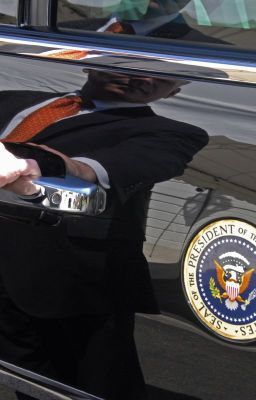
How the US Secret Service Failed Miserably During the Trump Shooting. - Could U. S. Secret Service negligence lead to criminal charges? (on Wattpad) https://www.wattpad.com/1466979874-how-the-us-secret-service-failed-miserably-during?utm_source=web&utm_medium=tumblr&utm_content=share_reading&wp_uname=Bubbalobob I am a veteran of the South African Air Force, having served my country from 1989 to 1991. Since 1996, I have worked in the security industry, conducting numerous investigations that have aided the South African Police. While on duty, I was also wounded in a bank robbery that resulted in the deaths of two bank robbers as well as the arrest of a third suspect. Given my background, I was instantly intrigued by the Trump assassination attempt. I began to contemplate the same questions many are asking now, particularly regarding the US Secret Service Standard Operating Procedure (SOP) that was intended to ensure the safety of the public, former President Donald Trump, and his security team. This article is based on my research.
0 notes
Text
Could U. S. Secret Service negligence lead to criminal charges?

Many people around the world still recall the moment when several shots were fired at Republican nominee Donald Trump during a speech at a rally in Butler, Pennsylvania, on July 13, 2024.
The assailant, 20-year-old Thomas Matthew Crooks, allegedly fired multiple rounds into the crowd from an elevated position on a nearby rooftop. Mr. Trump himself sustained a minor injury when one of the bullets grazed his right ear.
Amid the assassination attempt, two spectators were injured. James Copenhaver, 74, and David Dutch, 57, both sustained critical wounds during the incident.
Tragically, Corey Comperatore, a former fire chief and rally attendee, lost his life. Thomas Crooks also died during his failed attempt, and his motive remains unclear. My condolences go out to the Comperatore family and my thoughts and prayers go out to those who were wounded. Additionally, my condolences to the Crooks family, who cannot be held accountable for the actions of a family member who committed these horrendous crimes.

The podium on the northern side behind the stage where Mr. Corey Comperatore was fatally wounded.
I am a veteran of the South African Air Force, having served my country from 1989 to 1991. Since 1996, I have worked in the security industry, conducting numerous investigations that have aided the South African Police. While on duty, I was also wounded in a bank robbery that resulted in the deaths of two bank robbers as well as the arrest of of a third suspect.
Given my background, I was instantly intrigued by the events of that day. I began to contemplate the same questions many are asking now, particularly regarding the US Secret Service Standard Operating Procedure (SOP) that was intended to ensure the safety of the public, former President Donald Trump, and his security team.
The United States Secret Service Standard Operating Procedure (SOP)
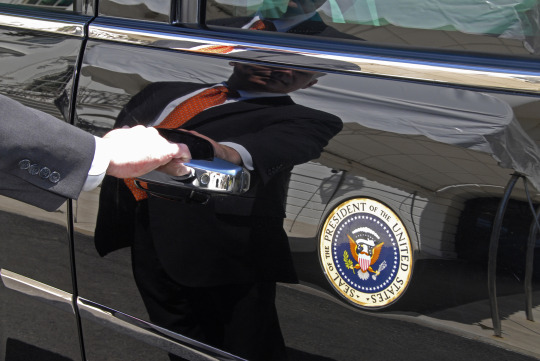
The SOP for the U.S. Secret Service when protecting a presidential candidate involves a comprehensive and multi-layered approach to ensure the safety and security of the candidate. It is important that we understand what those procedures are, before we can point out any failures on behalf of the Secret Service who had the sole responsibility to protect former president Donald Trump on that fateful day. While specific details are classified to protect the effectiveness of their operations, the general procedures include:
Advance Planning and Coordination:
Site Surveys: Secret Service agents conduct advance site surveys to assess the venue and identify potential vulnerabilities.
Coordination with Local Law Enforcement: The Secret Service coordinates with local, state, and federal law enforcement agencies for additional support and resources
Physical Security Measures:
Perimeter Security: Establishing secure perimeters around event locations using barriers, fences, and checkpoints.
Screening: All attendees are usually subject to thorough security screenings, including metal detectors, bag checks, and possibly even pat-downs by security personnel to ensure no prohibited items are brought into the venue.
Controlled Access: Implementing access control measures to restrict entry to certain areas, using identification badges and credentials.
Close Protection:
Protective Detail: Assigning a team of specially trained Secret Service agents to stay in close proximity to the candidate at all times.
Motorcade Security: Secure motorcade routes are planned and executed with a motorcade consisting of multiple vehicles, including decoy and support vehicles.
Emergency Evacuation Plans: Having contingency plans and routes for rapid evacuation in case of an emergency.
Intelligence and Threat Assessment:
Threat Monitoring: Continuous monitoring of threats through intelligence gathering and analysis from various sources.
Pre-emptive Actions: Taking pre-emptive actions to neutralize potential threats, including detaining or arresting suspicious individuals.
Communication and Command:
Communication Systems: Using secure and redundant communication systems to coordinate with all involved units and agencies.
Command Posts: Establishing command posts at event sites to oversee and manage operations.
Emergency Medical Support:
Medical Team: Having a medical team on standby to provide immediate medical assistance if needed.
Medical Facilities: Identifying nearby hospitals and medical facilities as part of the emergency planning.
Training and Drills:
Regular Training: Continuous training for agents in various protective techniques, emergency response, and tactical operations.
Simulation Drills: Conducting simulation drills to prepare for different scenarios and ensure readiness.
These procedures are designed to adapt to the dynamic nature of security threats and provide robust protection to presidential candidates. But somehow these procedures failed on that day which prompts many to question whether or not there was a conspiracy to assassinate Mr. Donald Trump.
Timeline of the events
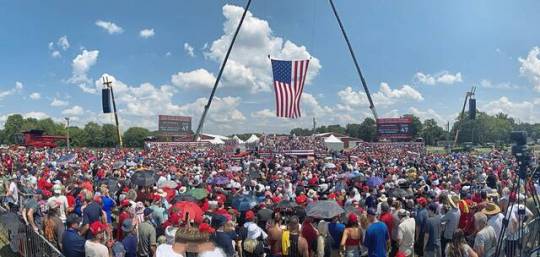
A vibrant and cheerful crowd at Butler Farm Show Grounds before the shooting on July 13, 2024.
On Saturday, July 13, under the intense 90 degrees Fahrenheit (32 degrees Celsius) heat, thousands of passionate supporters gathered at Pennsylvania’s Butler Farm Show, a vast 100-acre fairground renowned for its lively agricultural exhibitions. The air was electric with anticipation as they awaited the arrival of former President Donald Trump, a familiar and welcomed figure at this venue.
Butler County had demonstrated overwhelming support for Trump in the 2020 election, and the crowd was expected to be one of the most fervent and welcoming in the nation.
Twenty minutes before the shooting at 5:51 PM, the U.S. Secret Service received an urgent alert from the Pennsylvania State Police about a suspicious individual with a rangefinder on the ground.
By 5:52 PM, the Secret Service had relayed this information to the counter-sniper team positioned on the rooftops of three barns behind the stage, as well as to response agents on the ground. Local law enforcement was still uncertain whether the suspicious person was armed.
When Mr. Trump took the stage at 6:03 PM, he was met with an enthusiastic crowd and began delivering his much-anticipated speech.
At 6:09 PM, people in the crowd alerted law enforcement to a gunman on the roof of Building 6, approximately 200 yards (137 meters) away from the stage.
Thomas Crooks was seen by attendees climbing on top of the roof of Building 6, while frantically trying to point him out to local law enforcement officers.
youtube
“Look, they’re all pointing. Someone’s on top of the roof,” a person exclaimed as at least one law enforcement officer circled the building. “There he is, right there. Right there, see him? He’s lying down.”
Another individual gestured urgently to the officer, “He’s on the roof… right here, right on the roof.
Witness describes how he desperately tried to warn local law enforcement officers of the imminent danger, but to no avail.
youtube
A witness later recounted, “We noticed a guy crawling, you know, bear-crawling up the roof of the building beside us, 50 feet away from us. … So we’re standing there, you know, we’re pointing at the guy crawling up the roof.” The witness added, “He had a rifle — we could clearly see him with a rifle.”
Butler County Sheriff Michael Slupe described the tense moments just before the shooting when an armed officer tried to reach the gunman but had to retreat.
youtube
Butler County Sheriff Michael Slupe described the tense moments just before the shooting when an armed officer tried to reach the gunman but had to retreat. “All I know is the officer had both hands up on the roof to get up onto the roof,” Slupe told CBS Pittsburgh station KDKA, but the officer never made it “because the shooter had turned towards the officer.”
“And rightfully and smartfully, the officer let go,” Slupe said. “After that, the shooter turned his rifle back toward the rally.”
At 6:11:33, the first shot was fired…
What went wrong on that fateful day?
Advance Planning and Coordination:

A color-coded map of Butler Farm Show Grounds depicting 7 sectors identified by local law enforcement where security measures would be taken on the day of the Trump rally.
Given the Secret Service’s standard operating procedures, it is highly likely that a site survey was conducted before the assassination attempt on Trump. Acting Secret Service Director Ronald Rowe testified during the Senate hearing that a site survey was indeed conducted by Secret Service agents prior to the event.
However, specific details about the advance site surveys for this particular event would be part of the agency’s internal operations and not typically disclosed to the public, so we cannot say for certain how the site survey was conducted, and what the analysis was.
While the Beaver and Butler counties law enforcement held a security briefing before the event, the Secret Service was absent.
youtube
Both Beaver County police and Butler County police attended the Trump rally on July 13, 2024 to support the Secret Service Agency. Given the high-profile nature of the rally and the large crowd, it is common for multiple law enforcement agencies, including those from neighboring areas like Beaver County, to coordinate and assist in ensuring security and crowd control. This collaboration between different police departments is typical for significant events, especially those involving prominent figures like former President Donald Trump.
Earlier that morning both Beaver County and Butler County Law Enforcement held a security briefing in preparation for the upcoming event, however, the Secret Service was absent. In fact, the Beaver County S. W. A. T. team says they never spoke to the Secret Service until after the event.
By Secret Service Director Ronald Rowe’s own testimony, the agency ‘assumed’ that local law enforcement would have an effective plan in place that would contribute to the success of the operation, but never interacted with them before the event.
Physical Security Measures:
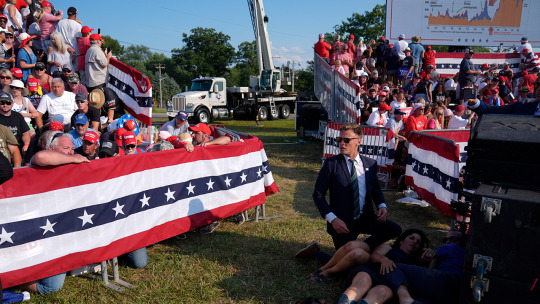
Portable barriers are effective measures for crowd control.
The area where Mr. Trump delivered his speech was cordoned off by a wired fence separating the show grounds from AGR International office buildings on the north of the venue and from video footage of that day, we can see that portable barriers were installed for additional crowd control.
The checkpoints at the Trump rally were manned by a combination of local law enforcement, including officers from the Butler County and Beaver County police departments, along with Secret Service agents.
The Secret Service was responsible for the overall security of the event, coordinating with local authorities to ensure thorough screening and access control measures. The coordination included the setup of checkpoints to manage the entry of attendees and to ensure the safety of the former president and the public.
It is not clear how Mr. Crooks could have bypassed any checkpoints at the venue while carrying a loaded AR-15 semi-automatic rifle, but we do know now that somehow he gained access to the venue and climbed unhindered on top of the roof of AGR International office Building 6 where he took aim in the direction of the Trump stage .

Secret Service Acting Director Ronald Rowe Jr. in the hot seat while giving testimony before the US Senate.
The acting director of the Secret Service informed lawmakers that he found it inexcusable that the roof used by the gunman in the attempted assassination of former President Donald Trump was left unsecured. He expressed disappointment that local law enforcement had not notified his agency about an armed individual being seen on a nearby roof before the shooting occurred.
Ronald Rowe Jr. also testified that he recently visited the shooting location and laid down on the roof of the building from where the shots were fired to evaluate the gunman’s line of sight during the July 13 incident in Butler, Pennsylvania.
“What I saw made me ashamed. As a career law enforcement officer and a 25-year Secret Service veteran, I cannot justify why that roof was not better secured,” he said.

This is a typical rangefinder that Crooks would have used. This one in particular is a Vortex Optics Crossfire HD 1400 Laser Rangefinder model.
According to reports, magnetometers and metal detectors were used by law enforcement on the day in question, however it is not clear how Crooks could have evaded detection. He was seen carrying a rangefinder and a back pack, and was allegedly reported by law enforcement officers at the scene as being suspect, but he was never engaged or searched. The type of rangefinder Mr. Crooks was later found to be in his possession of was not made public.
Rangefinders are optical devices used to measure the distance between the observer and a target. They typically use laser or other technologies to determine the range accurately.
It also has a monocular function which refers to the single eyepiece through which you view the target. It provides a magnified view of the scene, allowing you to focus on the target and obtain distance measurements. Some rangefinders also offer binocular functionality, but the monocular design is common for its compactness and ease of use.
Rangefinders are also used for its monocular function when attending public meetings, such as rock concerts and political rallies for the observer to have a better view. Some golfers use a rangefinder to precisely measure distance on the golf course, while photographers use a rangefinder with their cameras for precise focusing.
For those reasons mentioned above, I believe that when Crooks was seen with a rangefinder, he was first identified only as a medium threat, because a rangefinder poses no physical threat, but since the device can be used by snipers, he should have been approached and searched for weapons.

A typical AR-15 semi-automatic rifle with scope
However, Thomas Crooks managed to bypass Law Enforcement and the Secret Service while carrying a semi-automatic AR-15 rifle and climbed unhindered on top of the roof of Building 6 where he took his position to aim at Trump. He could have carried the rifle with its foldable stock hidden inside a backpack or a similar container.
Nevertheless, SOP demands all bags and containers to be searched before entering a protected premises, and if it was done according to procedure, Crooks would have been discovered and apprehended before he could continue his sinister mission.
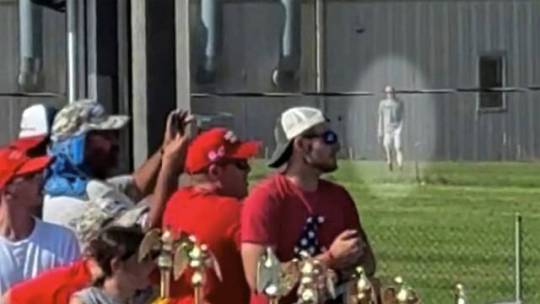
Mr. Crooks was seen behind the wired fence that separated Butler Farm Show Grounds from AGR International office complex north of the Trump stage.
Access control refers to the selective restriction of access to a place or other resource. It involves identifying and authorizing individuals to access certain information, areas, or assets. The main goal of access control is to protect assets from unauthorized access, ensuring security and privacy.
Attendees at the Trump rally on July 13, 2024, were required to register online for several key reasons:
Security Screening: Online registration allows for preliminary security checks on attendees. This can include background checks and identification verification to ensure that individuals with a history of threats or violent behavior are flagged and potentially denied entry.
Crowd Management: Knowing the number of attendees in advance helps organizers manage crowd size, ensuring the venue can accommodate everyone safely. It also aids in logistical planning, such as seating arrangements, entry and exit flow, and emergency evacuation plans.
Access Control: Online registration systems can generate unique QR codes or tickets for attendees, which can be scanned at entry points. This helps to prevent unauthorized access and ensures that only registered individuals are allowed into the event.
Health and Safety: In light of recent global health concerns, such as the COVID-19 pandemic, online registration can help in contact tracing efforts if needed. It also allows organizers to monitor the health status of attendees by including health screening questions during the registration process.
Data Collection: Registration provides valuable data on attendees, such as demographics, contact information, and preferences. This information can be used for future event planning, targeted communication, and enhancing overall attendee experience.
Compliance with Regulations: Many venues and local authorities require event organizers to have a list of attendees for safety and regulatory reasons. Online registration ensures compliance with such regulations.
Resource Allocation: Knowing the number of attendees helps in the proper allocation of resources such as food, beverages, seating, restrooms, and security personnel.
Emergency Preparedness: Having a record of all attendees can be crucial in the event of an emergency, ensuring that everyone can be accounted for and appropriate measures can be taken quickly.
Overall, requiring online registration for the rally was a strategic measure to enhance security, improve logistics, and ensure a safe and well-organized event for all participants.
I could not find any information whether or not Crooks had registered on the campaign website, but video footage showed him watching the events from behind a fence that separated the show grounds from the AGR International office complex.
Close Protection:

Close protection agents immediately gave cover to Mr. Trump by what some would call ‘a group hug’, blocking view towards their principal and providing protection from any physical attack.
The security detail designated to Mr. Trump on July 13, 2024, included special agents, presidential protective teams, counter-assault teams, and counter-sniper teams. These units worked together to ensure safety, although coordination challenges were evident during the event.
According to Secret Service Acting Director Ronald Rowe’s testimony, a total of 155 security personnel were designated to his detail, including the US Secret Service, Beaver County Police, and Butler County Police.

A redacted list of agents and law enforcement officials who supervised specialized units on July 13, 2024, was published by Senator Chuck Grassly on July 23, 2024.
Senator Chuck Grassley revealed during the Senate hearing that a Secret Service Counter Unmanned Aerial System (UAS) operator was indeed listed among the personnel for the July 13, 2024, event.
Despite this, records show that the Secret Service’s drone system faced operational delays due to cellular bandwidth issues and was not fully functional until 5:20 PM, nearly three hours after it was supposed to be operational.
Then-Director Cheatle testified before the Senate, noting that “the Secret Service occasionally deploys assets like drones as part of their security plans.” However, reports indicate that the assailant utilized a video-capable drone to fly over the event site hours before former President Trump took the stage, potentially aiding in the planning of the attack.

Former president Donald Trump’s motorcade
Secure motorcade routes were planned and executed with a motorcade consisting of multiple vehicles, including decoy and support vehicles.
After the shooting occurred, the Secret Service rapidly evacuated Mr. Trump in a manner that was evident that they had prepared contingency plans and planned routes for rapid evacuation in case of an emergency.
Communication and Command:

A screenshot entered into evidence during the inquiry shows that local law enforcement noticed Mr. Crooks at 5:38 PM and identified him as being suspicious.
Evidence presented during the inquiry has shown that local law enforcement had noticed Mr. Crooks at 5:38 PM with a rangefinder. He also noted that he had seen a bicycle with a backpack at the rear of the AGR International complex that could belong to the suspect.
The information was relayed via text messaging along with a picture of the suspect, but not by radio as it was a mandatory procedure that would ensure collective communication. A reply was sent via text messaging to the reporting officer to “call it in to command and let a uniform check it out.”
It is likely that when an uniformed officer went looking for the suspect, Mr. Crooks already moved his position from where he was last seen and then climbed on top of the roof at Building 6, which explains why law enforcement lost sight of him.
It is also likely that the officer who went looking for the suspect was the same officer who Butler County Sheriff Michael Slupe mentioned who approached Crooks while he was already in position on top of the roof, but had to retreat, because Crooks pointed his rifle at the officer as he tried to climb the roof to engage with the suspect.
If so, it is not clear why the officer did not fire warning shots that would have drawn attention to the suspect on the roof, but then again, the officer might have feared that the shooter could have fired back, causing a threat to civilians who gathered around Building 6.
According to Acting Director Ronald Rowe’s testimony, Secret Service was never informed of the situation and was therefor completely unaware of the approaching threat.
Conclusion:
In summary, Standard Operating Procedures (SOPs) are crucial for upholding the integrity, efficiency, and effectiveness of the Secret Service. They offer a consistent and reliable framework for operations, facilitate training and development, ensure accountability and responsibility, assist in risk management and compliance, enhance operational efficiency and effectiveness, and aid in documentation and record-keeping.
Although there may be times when deviations from SOPs are necessary, these should be carefully managed and justified to ensure that overall security is not compromised.
However, my research could find no valid reason for trained professionals such as the Secret Service to deviate from essential procedures like screening attendees, restricting access to sensitive areas like rooftops, employing drones and radio equipment, or taking pre-emptive actions to neutralize potential threats, including detaining or arresting suspicious individuals.
Human error is inevitable, but when professionals fail to follow multiple basic procedures resulting in death and injury, such negligence becomes criminal. If Standard Operating Procedure had been followed on July 13, 2024, the tragic events of that day could have been avoided.
0 notes